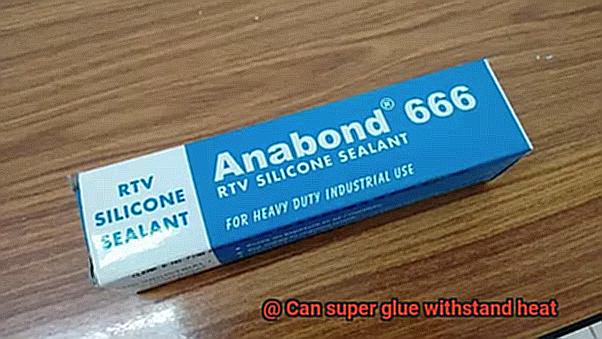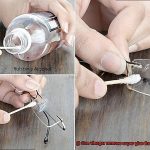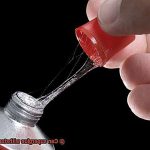Imagine this: you’ve painstakingly pieced together your masterpiece, only to watch it crumble under scorching temperatures. But fear not. Today, we embark on an epic journey to uncover the truth about super glue’s ability to withstand heat.
Super glue is the unsung hero of household repairs and craft projects. But when faced with extreme temperatures, does it stand tall or melt away like a popsicle in July?
Join us as we dive into the captivating world of chemical reactions, dissecting the inner workings of super glue to reveal its heat-resistance secrets. Brace yourself for mind-blowing discoveries.
Super glue, also known as cyanoacrylate adhesive, is famous for its lightning-fast bonding powers. But can it handle the heat? Let’s break it down. The main ingredient in super glue is cyanoacrylate, an acrylic resin that forms a strong bond in the presence of moisture. However, despite its “super” name, this adhesive isn’t invincible against high temperatures.
The heat resistance of super glue depends on various factors like brand and formulation. Generally speaking, most commercial-grade super glues can handle temperatures ranging from -30°C to 82°C (-22°F to 180°F). Impressive? Sure. But remember that extreme heat can weaken the bond and leave your masterpiece in ruins.
Here’s another twist: different materials have different heat tolerances. Glass and metal can handle higher temperatures compared to plastic or rubber, which tend to melt or warp under fiery conditions.
But hold onto your hats because here comes the exciting part: advancements in glue technology have given birth to heat-resistant variations of super glue. These special formulations contain extra ingredients that amp up their ability to withstand scorching temperatures, sometimes reaching a sizzling 160°C (320°F).
Whether you’re fixing a shattered ceramic vase, repairing a metal trinket, or creating your own dazzling jewelry, understanding super glue’s heat resistance empowers you to make informed choices and ensure your projects can handle the heat.
In our upcoming blog posts, we’ll dive deeper into the specific types of super glue available, their temperature thresholds, and share expert tips on how to make the most of this fiery adhesive. So stay tuned and get ready for some adhesive adventures.
What is Super Glue?
Contents
- 1 What is Super Glue?
- 2 Different Types of Super Glue
- 3 Heat Resistance of Standard Super Glue
- 4 Factors that Affect the Heat Resistance of Super Glue
- 5 Precautions to Ensure Optimal Performance of Super Glue Under Heat
- 6 How to Test the Heat Resistance of Super Glue
- 7 How to Improve the Heat Resistance of Super Glue
- 7.1 Additives to the Rescue:
- 7.2 By adding these fillers, you create a reinforced glue that can withstand higher temperatures without losing its adhesive properties. The fillers disperse throughout the glue, forming a network that provides thermal stability and prevents degradation. This enhanced heat resistance makes it ideal for applications where high temperatures are involved.
- 7.3 Specialized Heat-Resistant Super Glue:
- 7.4 Consider opting for specialized heat-resistant super glues that are specifically designed to withstand high temperatures. These glues have a higher melting point and better thermal stability compared to regular super glues. Look for products that can tolerate temperatures ranging from 300°F (149°C) up to 600°F (315°C) or even higher, depending on your specific needs.
- 7.5 Surface Preparation Matters:
- 7.6 When surfaces are clean and dry, the super glue can adhere more effectively, forming a strong bond that is less likely to be compromised by heat. Removing any contaminants also prevents the formation of weak spots in the bond that could be vulnerable to thermal degradation. Additionally, roughening the surfaces increases the contact area between the glue and the substrate, further enhancing the bond strength.
- 7.7 Apply Generously, But Not Excessively:
- 8 Alternatives to Super Glue for High-Temperature Applications
- 9 Conclusion
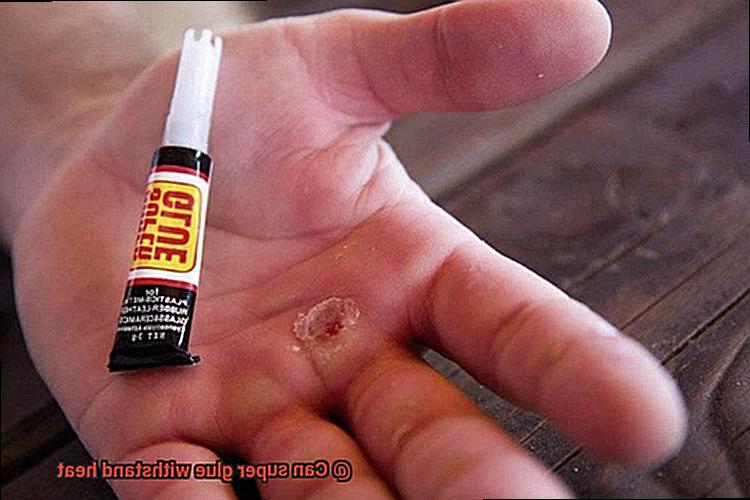
When it comes to joining materials with lightning speed and unyielding strength, nothing quite compares to the marvel that is super glue. Known scientifically as cyanoacrylate adhesive, this versatile bonding agent has become a household staple, an essential tool for crafting enthusiasts, and even a game-changer in the medical field. In this article, let’s dive into the extraordinary world of super glue, exploring its composition, remarkable capabilities, and best practices for optimal usage.
Composition and Bonding Potential:
At the core of super glue lies a chemical compound called cyanoacrylate. When exposed to moisture, whether it be ambient humidity or the moisture present on the surfaces being bonded, a rapid chemical reaction takes place. This reaction triggers polymerization, resulting in an astonishingly robust bond formed within mere seconds or minutes.
Versatility at its Finest:
One of the most awe-inspiring attributes of super glue is its ability to bond an extensive array of materials. Whether you’re working with plastics, metals, ceramics, glass, rubber, or certain types of wood, super glue is your go-to adhesive. Its versatility knows no bounds, making it an indispensable tool for endless applications.
Strength and Durability:
Once fully cured, super glue establishes an impressively strong bond capable of withstanding impacts and vibrations. This makes it ideal for bonding items subjected to frequent use or high stress levels. However, it’s crucial to note that although super glue is resilient, prolonged exposure to high temperatures can potentially weaken the bond or cause the adhesive to deteriorate.
Heat Resistance:
Standard super glue demonstrates admirable fortitude against temperatures of up to approximately 180°F (82°C) without compromising its bonding properties. Nevertheless, for applications involving more extreme heat or heat-sensitive materials, specialized versions specifically engineered for such purposes are advisable. These high-temperature variants are commonly employed in industrial settings where heat resistance is paramount.
Best Practices:
To ensure optimal results when using super glue under heat or with heat-sensitive materials, always refer to the product label or consult the manufacturer’s instructions. Avoid subjecting super glue bonds to extreme heat or placing them in environments with high temperatures. If your project demands a more heat-resistant bond, consider using specialty adhesives formulated explicitly for that purpose.
Different Types of Super Glue
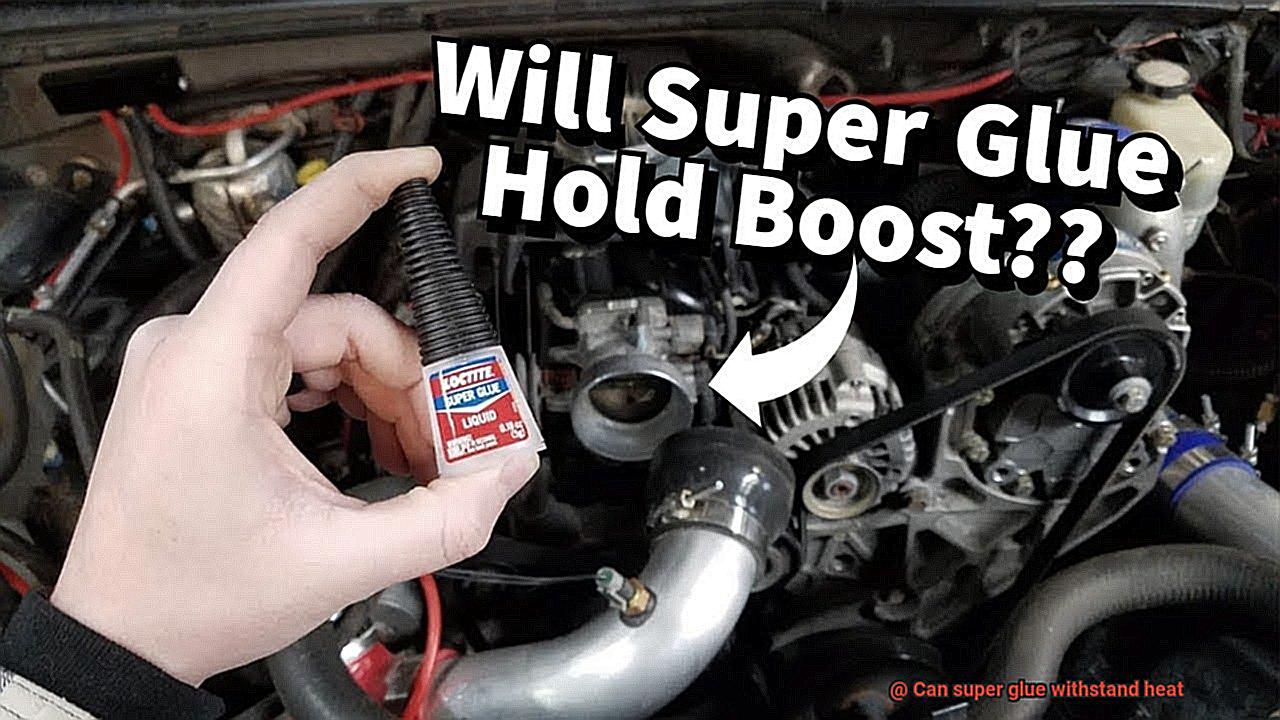
Super glue is a versatile adhesive that can bond various materials quickly and securely. However, not all super glues are created equal when it comes to heat resistance. In this blog post, we will explore the different types of super glue available in the market and their respective heat resistance capabilities.
Standard Cyanoacrylate Adhesive:
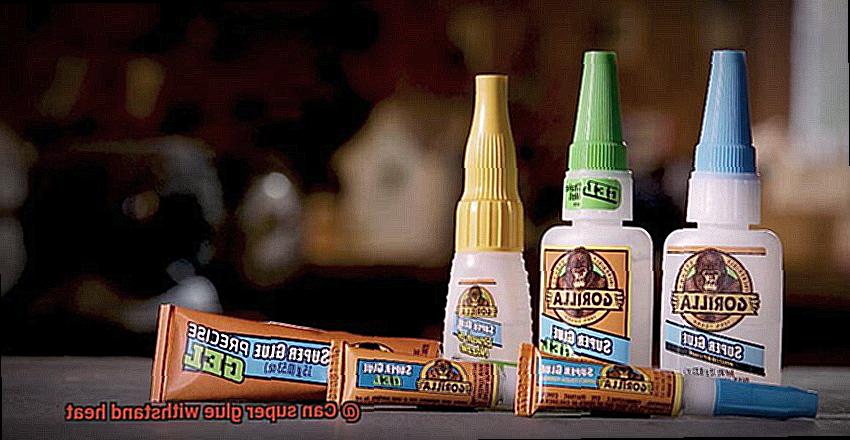
The most common type of super glue is the standard cyanoacrylate adhesive. It is suitable for general household repairs and bonding materials like plastic, metal, and wood. This type of super glue has moderate heat resistance, withstanding temperatures up to around 180°F (82°C). It is perfect for everyday use but may not be suitable for high-temperature environments.
Gel-Based Cyanoacrylate Adhesive:
If you need more control over your adhesive application or are working with porous materials that require better coverage, consider using gel-based super glue. Gel super glues have a thicker consistency, making them ideal for vertical applications or situations where precise control is crucial. Gel super glues also tend to have better heat resistance compared to their liquid counterparts.
Heat-Resistant Super Glues:
For applications that involve exposure to higher temperatures, specialized heat-resistant super glues are available. These glues are designed to withstand elevated temperatures ranging from 250°F (121°C) to 500°F (260°C) or even higher. They provide reliable bonding strength in moderate heat sources, making them suitable for various projects.
High-Temperature Super Glues:
In automotive repairs or industrial settings where extreme heat is involved, high-temperature super glues are the go-to option. These glues can withstand even higher temperatures than heat-resistant super glues, ensuring long-lasting and durable bonds in challenging environments.
Consider Material Compatibility:
While choosing a super glue with high heat resistance, it’s essential to consider the compatibility of the adhesive with the materials you are bonding. Some materials naturally have lower heat resistance, which can affect the overall performance of the adhesive. Be sure to check the product labels and consult the manufacturer’s instructions for optimal results.
Heat Resistance of Standard Super Glue
Well, let me dive into the fascinating world of adhesive science and shed some light on this burning question.
Standard super glue, also known as cyanoacrylate adhesive, is a popular choice for bonding various materials due to its rapid drying and powerful adhesive properties. However, when it comes to heat resistance, not all super glues are created equal.
In general, most standard super glues can withstand temperatures between 180°F (82°C) and 200°F (93°C) without losing their bond strength or becoming brittle. This means that if you’re working on a project that involves moderate heat exposure, standard super glue should handle the heat like a seasoned firefighter.
Nevertheless, it’s crucial to understand that the heat resistance of super glue can be influenced by several factors. So, let’s take a closer look at these factors:
- Thickness of the Bond: Thicker bonds may experience higher levels of stress under scorching temperatures, making them more prone to failure. If you’re working with thicker materials or creating a robust bond, you might want to consider using a specialized heat-resistant super glue that can handle the heat with unwavering confidence.
- Type of Material: Different materials have different thermal conductivities. Heat-conductive materials may transfer heat more rapidly to the bond area, potentially compromising the adhesive’s strength. If you find yourself bonding heat-conductive materials, it’s advisable to turn to a specialized heat-resistant adhesive that can bravely endure the searing temperatures.
- Duration of Exposure: Prolonged exposure to high temperatures can weaken the bond over time, like a relentless flame slowly melting away resolve. If your project involves extended encounters with scorching heat, it’s recommended to opt for specialized heat-resistant adhesives that possess a steadfast resistance against the relentless onslaught of high temperatures.
Now, if you anticipate a need for even stronger heat resistance than what standard super glue can offer, fear not. Specialized formulations of heat-resistant super glue exist to cater to applications that involve extreme temperatures or direct heat sources. These specialized glues exhibit higher heat resistance, oftentimes reaching up to a remarkable 400°F (204°C) or even higher.
In conclusion, if your project involves moderate heat exposure, standard super glue will be your trusty companion. However, if you’re venturing into the fiery realms of high temperatures or direct heat sources, it’s wise to equip yourself with specialized heat-resistant adhesives or explore alternative bonding methods like epoxy adhesives or structural adhesives that thrive in the scorching inferno.
Factors that Affect the Heat Resistance of Super Glue
Today, we embark on a captivating journey through the depths of super glue’s heat resistance, unraveling the intricate factors that determine its ability to withstand scorching temperatures. So, fasten your seatbelts and prepare for an exhilarating exploration.
Composition:
At the core of every superhero’s power lies their unique composition, and super glue is no exception.
Comprised of a diverse blend of cyanoacrylate monomers, different brands and types of super glue boast varying compositions that directly influence their heat resistance.
Choosing a brand with a proven track record in withstanding high temperatures is paramount to achieving optimal results.
Bonding Surface:
The material onto which you seek to bond plays a pivotal role in determining super glue’s heat resistance. Materials such as metals, ceramics, and glass exhibit superior heat resistance compared to more delicate surfaces like plastics or wood. Remember, the bond strength is intricately tied to the bonding surface, impacting the glue’s ability to endure intense heat.
Application Method:
Mastery over proper application techniques is pivotal in unleashing the full potential of super glue’s heat resistance. Adhering closely to the manufacturer’s instructions ensures that the ideal amount of glue is applied and allows ample time for complete curing. Hasty application or excessive use of glue can undermine the bond strength and compromise its capacity to withstand high temperatures.
Temperature Range:
Every superhero possesses their limitations, and super glue is no exception. Extreme temperatures have the potential to cause it to deteriorate or become brittle, rendering it ineffective.
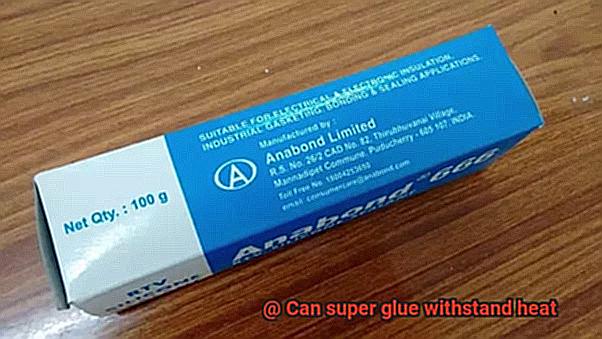
Staying within the recommended temperature range preserves the integrity of the adhesive strength, ensuring it remains unyielding against formidable heat.
Duration of Exposure:
Protracted exposure to elevated temperatures gradually erodes the bond strength of super glue. Assessing the anticipated duration of heat exposure for your specific project is crucial in selecting a super glue that aligns with your needs. While fleeting encounters with heat may not cause significant harm, extended exposure could prove catastrophic.
External Environmental Factors:

The heat resistance of super glue can be influenced by external environmental factors. High humidity or excessive moisture levels impede the curing process, compromising the bond’s strength. Additionally, exposure to chemicals or solvents present in the environment can erode the heat resistance of super glue. Guarding against these variables is pivotal in preserving its resilience.
Quality and Brand:
Not all heroes are created equal, and the same holds true for super glue. Opting for renowned brands that have undergone rigorous testing to withstand high temperatures guarantees superior results. When it comes to heat resistance, quality and brand reputation are indispensable allies.
Precautions to Ensure Optimal Performance of Super Glue Under Heat
In this blog post, we will uncover the precautions you need to take to achieve superhero-like bonding capabilities with super glue under heat.
- Choose the right type: Not all adhesives can handle the heat. Look for a high-temperature resistant super glue specifically designed to withstand scorching conditions. These formulations have heat-resistant properties that maintain bond strength under extreme temperatures.
- Prepare the surfaces: Clean, dry, and contaminant-free surfaces are essential for a strong bond. Oil, grease, dust, or moisture can interfere with adhesion, especially under heat. So, ensure your surfaces are pristine before applying super glue.
- Consider material compatibility: Some materials don’t handle heat well. Regular super glue may fail on these surfaces. Explore alternative adhesives specifically formulated for bonding those materials under high-heat conditions.
- Apply with care: Excessive glue can trap air or moisture that weakens bonds under heat. Remember, less is more. Apply a thin, even layer of glue and ensure proper contact between surfaces for maximum adhesion.
- Check the temperature range: Know the maximum temperature your assembly will face and choose an adhesive that can handle it. Extreme temperatures beyond the adhesive’s limits may require specialized high-temperature adhesives or alternative bonding methods.
- Store properly: Super glue should be stored in a cool, dry place away from heat sources and sunlight. High temperatures during storage can degrade performance even before use. Give your adhesive VIP treatment and watch its heat resistance soar.
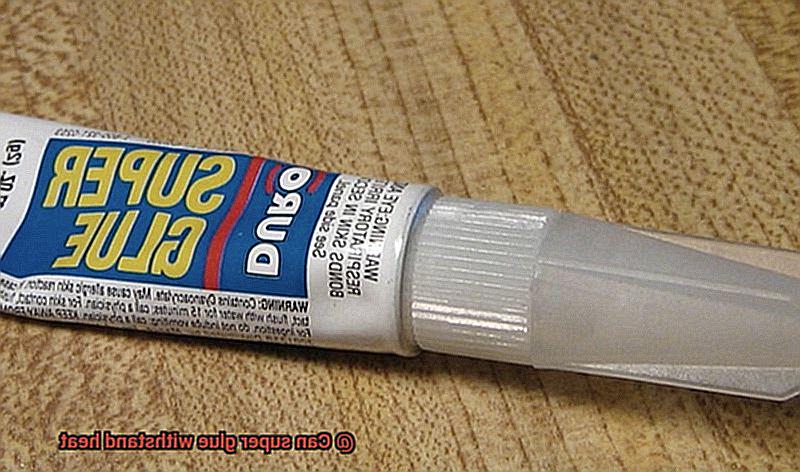
How to Test the Heat Resistance of Super Glue
Super glue is renowned for its fast drying and strong bonding properties, making it a popular choice for various applications. However, when it comes to high temperatures, does super glue hold up? In this article, we will explore different methods to test the heat resistance of super glue and determine if it remains resilient under extreme heat conditions.
Method 1: The Hot Water Test
One simple yet effective way to assess the heat resistance of super glue is by conducting a hot water test. Start by applying a small amount of super glue to a scrap material and allowing it to dry completely. Once dry, immerse the glued area into hot water (not boiling) and carefully observe its reaction. If the glue remains intact without weakening or melting, it can be considered heat resistant.
Method 2: The Oven Test
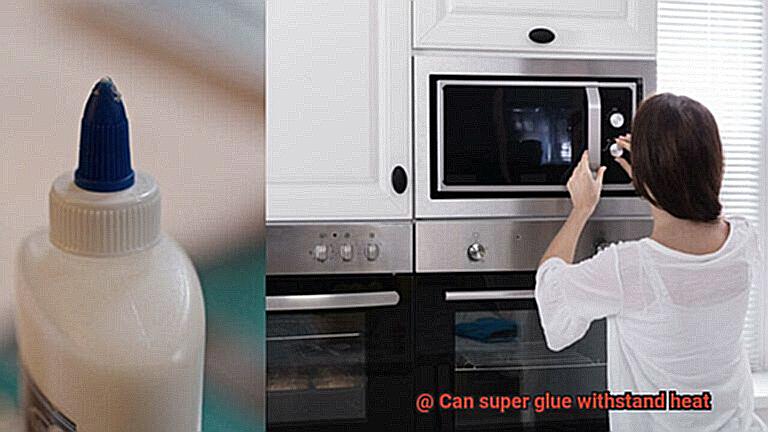
Another method involves using an oven to simulate high-temperature conditions. Apply super glue to a scrap material and allow it to dry. Then, place the glued area in a preheated oven at a moderate temperature (around 150-200 degrees Celsius or 300-400 degrees Fahrenheit) for approximately 30 minutes. After removing it from the oven, inspect the bond for strength and signs of damage or melting.
Method 3: The Flame Test
For a more exhilarating test, you can subject super glue to an open flame. Apply super glue to a scrap material and let it dry completely. Hold the glued area directly over a flame for a brief period, such as 10 seconds. Upon completion, carefully examine the bond for any signs of deterioration or melting. If the glue remains unaffected by the flame, you have indeed found a heat-resistant adhesive.
How to Improve the Heat Resistance of Super Glue
Super glue is a versatile adhesive that is widely used for bonding various materials together. However, when it comes to heat resistance, super glue has its limitations.
In this blog post, we will explore some effective strategies to improve the heat resistance of super glue, allowing you to tackle projects that involve higher temperatures with confidence.
Additives to the Rescue:
One way to enhance the heat resistance of super glue is by incorporating fillers or additives into the adhesive formula. These fillers act as a protective barrier, shielding the glue from the heat source. Glass fibers, ceramic particles, or metal powders are commonly used fillers that can significantly improve the adhesive’s ability to withstand heat.
By adding these fillers, you create a reinforced glue that can withstand higher temperatures without losing its adhesive properties. The fillers disperse throughout the glue, forming a network that provides thermal stability and prevents degradation. This enhanced heat resistance makes it ideal for applications where high temperatures are involved.
Specialized Heat-Resistant Super Glue:
Consider opting for specialized heat-resistant super glues that are specifically designed to withstand high temperatures. These glues have a higher melting point and better thermal stability compared to regular super glues. Look for products that can tolerate temperatures ranging from 300°F (149°C) up to 600°F (315°C) or even higher, depending on your specific needs.
These specialized heat-resistant super glues often contain different chemical compositions that allow them to maintain their integrity and adhesive strength under extreme heat conditions. They are engineered to resist heat-related degradation and provide reliable bonding even in high-temperature applications.
Surface Preparation Matters:
Proper surface preparation is vital for achieving strong and heat-resistant bonds. Before applying super glue, ensure that the surfaces being bonded are clean, dry, and free from any contaminants like dirt, oil, or moisture. Cleaning and roughening the surfaces can significantly improve bond strength and enhance heat resistance.
When surfaces are clean and dry, the super glue can adhere more effectively, forming a strong bond that is less likely to be compromised by heat. Removing any contaminants also prevents the formation of weak spots in the bond that could be vulnerable to thermal degradation. Additionally, roughening the surfaces increases the contact area between the glue and the substrate, further enhancing the bond strength.
Apply Generously, But Not Excessively:
When using super glue for heat-resistant applications, it is important to apply an adequate amount of glue to ensure proper coverage and a strong bond. A thin layer may result in weak bonds that are more susceptible to thermal degradation. However, be cautious not to apply excessive amounts as it may lead to messy and uneven bonds.
Alternatives to Super Glue for High-Temperature Applications
Super glue, known as cyanoacrylate adhesive, is renowned for its quick-set and robust bonding properties. However, when it comes to high-temperature applications, super glue falls short, losing strength and effectiveness. In this informative blog post, we will delve into alternative adhesives specifically designed to withstand extreme temperatures. These alternatives offer superior heat resistance, ensuring reliable and durable bonds in high-temperature environments.
Epoxy Resin:
Epoxy adhesives are renowned for their exceptional temperature resistance, withstanding temperatures ranging from -50°C to 150°C or higher depending on the specific product. Industries such as aerospace, automotive, and electronics widely employ epoxy resin due to its ability to provide strong bonds under challenging conditions. Its durability and versatility make epoxy resin an ideal choice for high-temperature applications.
Silicone Adhesive:
Silicone adhesives exhibit remarkable heat resistance, enduring temperatures up to 300°C or more. With excellent flexibility and adhesion properties to a wide array of materials, silicone adhesives are crucial in applications where thermal stability is paramount. From sealing electronic components to bonding heat-sensitive materials, silicone adhesives maintain their strength even under extreme temperatures.
Polyurethane Adhesive:
Polyurethane adhesives can withstand temperatures up to 120°C while offering excellent resistance against chemicals, solvents, and moisture. This adhesive is commonly found in construction and automotive industries due to its versatility and durability. Whether faced with high temperatures or harsh environments, polyurethane adhesives provide a robust bond that endures.
Ceramic-Based Adhesives:
For environments surpassing 1000°C, ceramic-based adhesives are indispensable. Designed specifically for bonding ceramics, glass, and metals in high-heat applications like furnaces or kilns, ceramic-based adhesives exhibit unparalleled heat resistance. These adhesives are the go-to choice for extreme temperature conditions, ensuring a secure and reliable bond.
mLayFRQ7jdo” >
Also Read: How Much Weight Can Hot Glue Hold?
Conclusion
Super glue, a popular adhesive known for its ability to bond materials together, is often used in various applications.
But can it withstand heat? The answer is yes, to a certain extent.
Super glue is designed to be heat-resistant, with most varieties able to withstand temperatures up to 180°F (82°C). This makes it suitable for use in environments where moderate heat may be present, such as kitchens or workshops.
However, it’s important to note that extreme temperatures can still cause the glue to weaken or fail altogether.

